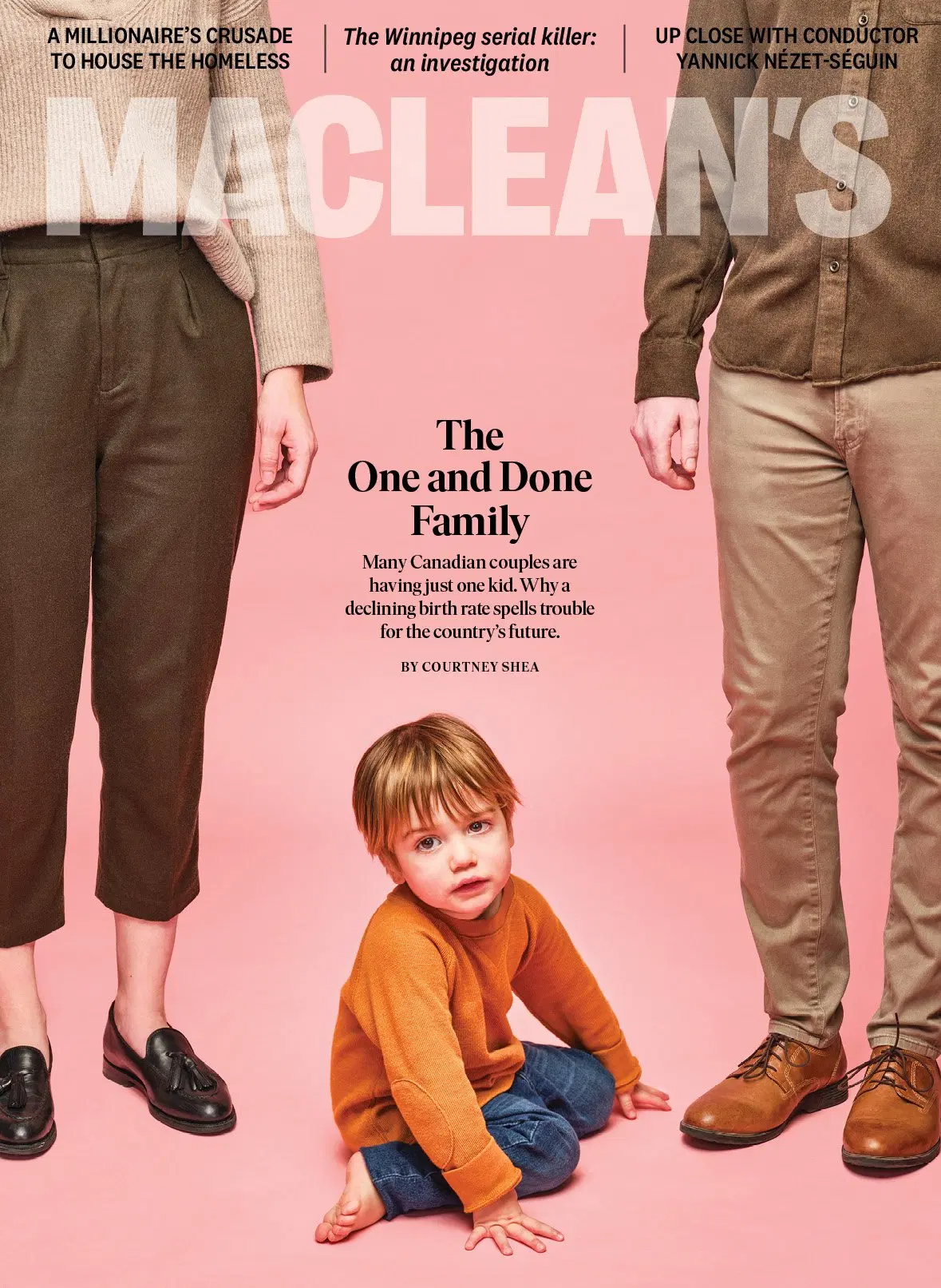The Rise of the One-and-Done Family
Many Canadian couples are having just one kid. Why a declining birth rate spells trouble for the country’s future.
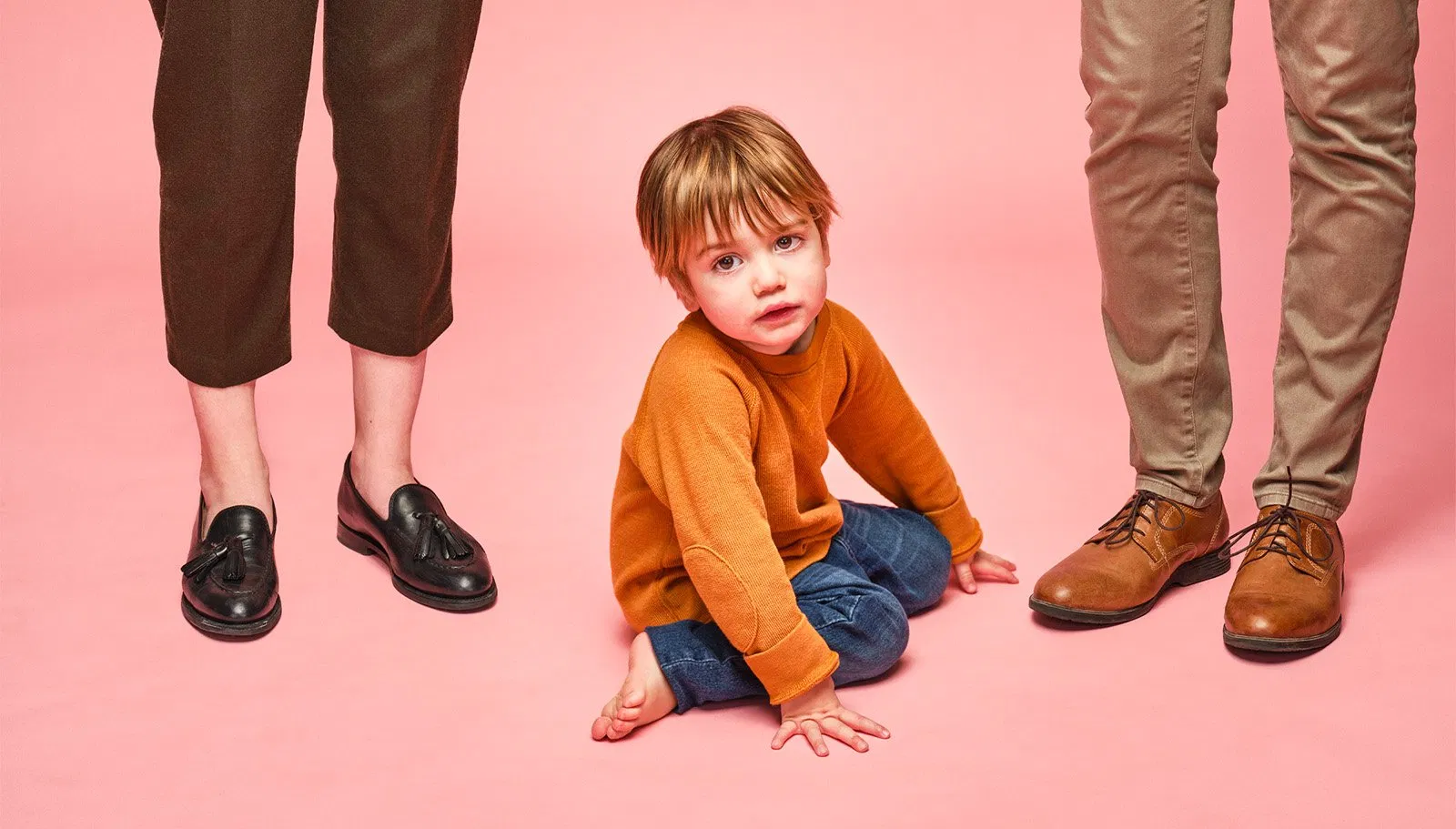
Share
February 15, 2024
I became a parent in the summer of 2021, at the age of 42, partway between Delta and Omicron. While the world was fretting over Pfizer versus Moderna, my partner, John, and I were going back and forth on baby names. One night in late June, I fell asleep watching yet another British detective series. Hours later I was jolted awake by an unfamiliar whoosh—so that’s water breaking. I wasn’t someone who found comfort researching the birth process, instead opting for a cross-that-bridge-when-I-come-to-it style of self-preservation. And suddenly there I was, at the foot of a bridge that would evaporate as I passed, about to become a parent—no punchbacks. I shook John awake. “Can’t we wait a bit?” he mumbled, still half-asleep. Which was funny, because we’d waited a good long while already.
John and I celebrated our 20-year anniversary in the first trimester of my geriatric pregnancy. The two decades between were filled with milestones: finishing school, cohabitation, first grown-up jobs, first promotions, first RRSP contributions, first home, first mortgage payment. There was also a lot of fun. When my friends started having kids in their thirties, I just wasn’t there yet. And if I’m being honest, I wasn’t entirely “there” as we drove to the hospital. I didn’t grow up dreaming of motherhood. Meeting a friend’s baby never once prompted me to joke about “my ovarrrrrrries.” Even as a parent, I cringe when other moms say things like, “Do you even remember what you cared about before?” I care about so many things: my loved ones, my work, my ability to earn a living. I care about reading, travelling, dismantling the patriarchy, musical theatre. My life was incredibly full before I had a baby. I just never knew for sure that I didn’t want one. Then, suddenly, I was Darby’s mom.
Parenthood has been axis-shifting, profound in a way that defies description except to say that I am now a person who can’t get through the opening number of The Lion King without weeping. Like most new moms and dads, John and I think everything our daughter does is the funniest or the most fascinating. The last two and a half years have been filled in almost equal parts with joy and poop. I know this is not the experience of every new parent, and the gratitude I feel is immense. But have another? Hell no. Like so many parents these days, we have our one, and we are done.
The number of single-child families in Canada has doubled in my lifetime. They’re part of both a growing demographic and a global movement. The r/oneanddone subreddit includes a popular “Fencesitters Friday” thread and a surprising number of vasectomy-celebration posts. On Instagram and TikTok, the #oneanddone hashtag accompanies a mix of corny quotes (“What if we called it ‘One and Won?’ ”) and cathartic rants (when parents of multiples post about “completing their family with a second or a third or a seventh child”). Jen Dalton, a one-and-done influencer in Sudbury, Ontario, started her @oneanddoneparenting Instagram account in 2020, looking to connect with other parents in similar circumstances. Today, she has a following of 55,000—mostly millennial women who share their own one-and-done war stories in the comments.
One reason adults today are having fewer children is because they start later. Working women especially put off parenthood to meet the high demands of professional success and sometimes end up one and done whether they like it or not. Economic barriers are also affecting family size: the rising cost of living, the lack of affordable housing and childcare, the pressure to provide for kids into their twenties. And the intensity of parenting culture has upped the ante on what it means (and what it takes) to do the job right. Even for parents like me, who see their tiny triangle family as the perfect shape, there’s the sense that another kid would upset what amounts to a fine balance.
Because, let’s face it, modern parenthood has become largely incompatible with modern life. More is required and less is available, and being one and done emerges like a secret portal to a potentially feasible existence. Concerned about affordability? One is cheaper. Worried about balancing career and parenthood? One is less demanding. Climate anxiety? Fewer kids equals fewer emissions. Love your kid, but can’t fathom going through those early years again? Here’s an idea: quit while you’re ahead.
The most recent census data showed that single-child families are the most common type of Canadian family with kids, making up 45 per cent of households, compared to 38 per cent with two kids and 17 per cent with three or more. On a domestic level, the rise of one and done is reconfiguring the layout of family dinner tables. On a population level, it’s driving the trend toward lower birth rates. In 2022, Canada hit a record fertility low of 1.33 births per woman. That’s a huge drop from 15 years ago (1.67) and puts us on the cusp of a group of the “lowest low” countries, as demographers call them, which include Italy (1.3), Spain (1.3), Singapore (1.05) and Hong Kong (0.87). By the time my daughter enters adulthood, Canada’s ever-greyer population pyramid and shrinking labour market will place huge stress on public health care and Canada’s pension system.
All of this contradicts the more familiar narrative about the dangers of overpopulation, particularly in connection with food and shelter supply and climate change. Harry and Meghan recently got an award from a U.K. climate charity when they announced their intention to stop at two kids, and thousands of young women in Canada have made the #NoFutureNoChildren pledge, demanding that the federal government take greater action against global warming. Of course human population growth is central to our current climate crisis—but, looking 20 or 30 years down the road, the impact of population contraction will be what everyone is talking about. In 2000, there were 17 nations with fertility rates below the rate of replacement, which is around 2.1 births per adult woman. Today more than half the world’s population is below the replacement rate. China, one of the world’s most populous countries, which only ended its one-child policy in 2016, is now in a decline stage, with a fertility rate of 1.2 births per adult woman.
Canadian researcher Darrell Bricker travelled to 12 countries to speak to families about their childbearing choices for his book on fertility decline, Empty Planet, co-written with John Ibbitson. What he heard was the same from Portland to Phuket: when societies embrace progressive values, women get more choice. And when they have more choice, they have fewer children. He points to Kenya, for example, where women and girls are getting education and access to contraception, and where the fertility rates are dropping fast. The same decline that took 150 years in Western countries is happening over two decades in the developing world. The reasons people want children have changed, Bricker says: “If you’re a young person weighing options on the kind of life you want to have, the things you want to accomplish, one kid, maybe a dog or a cat—it starts to sound pretty good.”
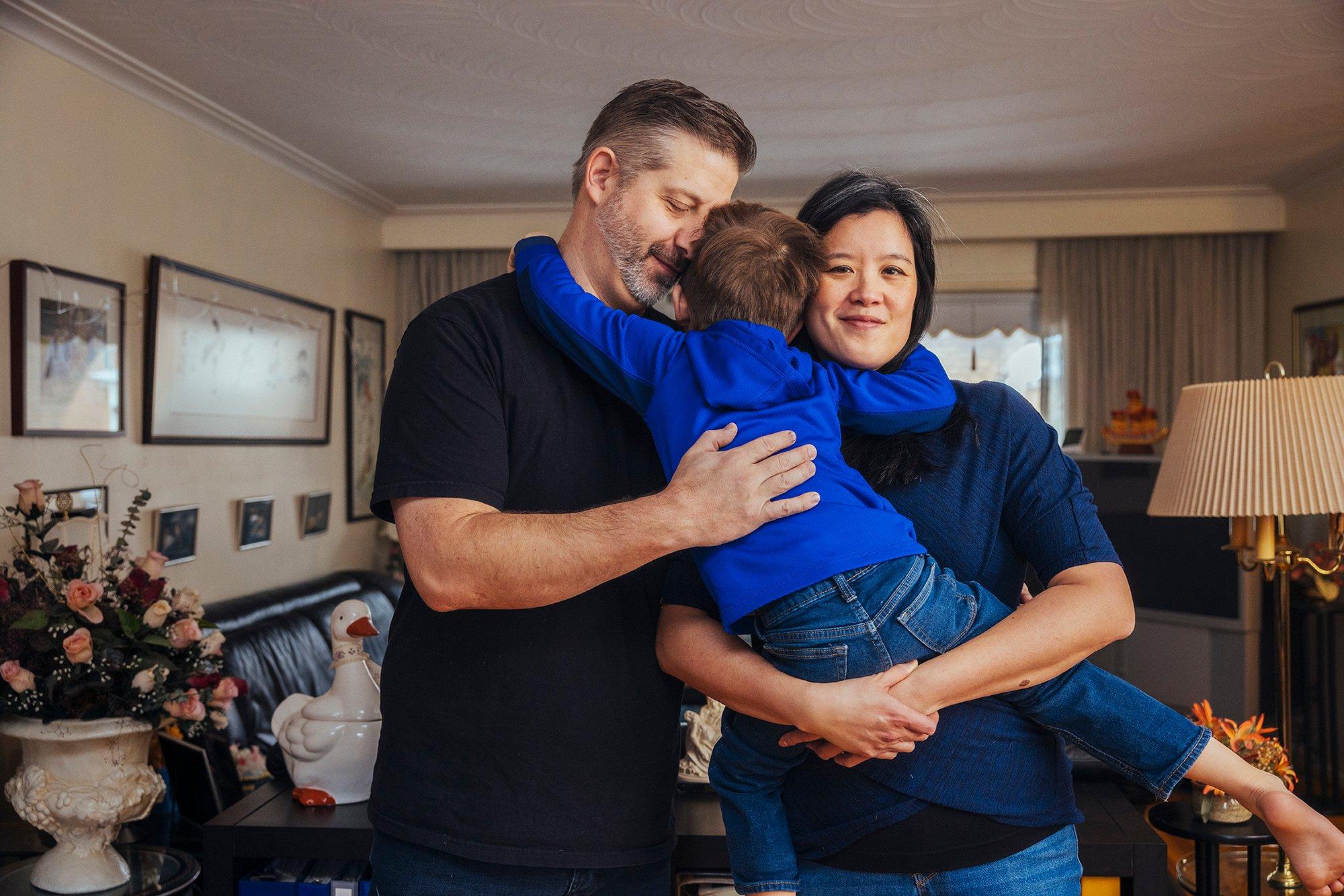
In the mid-1800s, the average Canadian family had between six and seven children, and it wasn’t because they wanted to land a series on TLC. Up until the early 20th century, most North Americans lived and worked on farms or ran family businesses, and children were an economical way to staff up. About one in three children died before their fifth birthday, so it made sense to have a few spares on hand. Family, before the modern era, was linked by economic purpose and geography. That changed when an emerging factory culture brought workers from their rural communities into cities. Urbanization played a huge role in curtailing family size: housing was more expensive, and children were less valuable to domestic production.
Fertility in Canada took a hit following the First World War and the Great Depression, plummeting from 4.04 births per woman in 1910 to 2.7 in 1940. At the onset of the Second World War, policy-makers were determined to avoid a similar downturn. The Department of Veterans Affairs helped men returning from war re-enter society by offering free university tuition, on-the-job training and low-interest mortgages. The Family Allowance Act of 1945 was Canada’s first-ever universal welfare program, providing a monthly average of $5.94 per child—about $100 in today’s dollars—and helping to drive a historic baby boom. One million Canadians purchased new homes in the decade following the war, creating both the suburbs and the suburban ideal.
Demographers had always predicted a series of echo booms as the boomer babies entered early adulthood in the mid-1960s. Instead there was a historic bust. The Equal Pay Act in 1963, and the legalization of contraception in 1969, gave women more choices and greater opportunity. Paid maternity leave started in 1971, the same year fertility in Canada dipped below the rate of replacement for the first time. With record prosperity, education and the rise of progressive ideals, young people had the opportunity to consider wants instead of needs. And what did they want? More self-fulfillment and fewer kids.
The conflict between work life and family life that kicked off half a century ago has only grown more combustible. Seventy-seven per cent of Canadian mothers today work. Most of us because we have to. Many of us because we want to. It is an enormous privilege to pursue a life geared toward personal satisfaction. It’s also a huge time suck. The rise in careerism (and its younger sibling, hustle culture) has us sacrificing brain space and bandwidth and Sunday afternoons at the altar of work. For people with kids, these demands make work-life balance seem like a punchline. For those without kids, it often means deferment.
The average age of a first-time mother in Canada is now 29.4, up from 22 in the 1960s. For the last decade or so, fewer babies have been born to women under 25 than over 35. Many Canadian women spend our peak fertility years pulling all-nighters, working to pay off student debt, juggling gig work and establishing ourselves in a labour force that remains hostile to our long-term success. Those who manage the elusive trifecta of professional success (money x fulfillment x stability) often feel like they can’t just step away to have a child.
I was able to connect with a lot of parents who are feeling the effects of these statistics and social trends on a personal level. Moira Kwok devoted her twenties and early thirties to school: four years on a science degree, another four getting certified in naturopathic medicine. An internship led her to focus on women’s health and fertility, and she launched her practice the year she turned 28. She met her future husband, Jeff, three years later, and two years after that they got married. They agreed to start a family—just not right away. The couple bought a house in Toronto the year Kwok turned 34. “We wanted it to be just us for a bit, to enjoy this life we were building together,” she says. When she booked her first appointment at a fertility clinic, she was 36 with a happy marriage, a thriving practice and, pretty soon, a diagnosis: “unexplained infertility.”
Ontario’s fertility funding policy covers the first (and only the first) round of IVF, but Moira and Jeff still had to pay about $12,000 to cover the hormone drugs. When she finally became pregnant, Kwok avoided sharing her news, worried that she wouldn’t reach the end goal. But she did: her son was born in 2019. The couple planned to try for another using the second embryo that had come from their IVF cycle, but when Kwok miscarried, they knew they had to stop. A second round of fertility treatments would have cost them upward of $25,000, and that’s not factoring in the physical and mental stress. It’s a poignant cocktail of gratitude and grief, Kwok explains. “On the one hand, what we’ve experienced highlights how lucky we are to have the child we have. At the same time, the amount that we love him can sometimes make it harder to accept that we can’t have another.”
Starting fertility treatment earlier might have given them more viable embryos the first time around, but Kwok tries not to think in those terms. “It’s a trade-off,” she says. “I don’t regret the time I spent working on my career or waiting to find the right partner.” She also has trouble imagining the financial demands of a larger family: “Two kids in daycare at the same time. Who can afford that?” On Facebook, she belongs to a group for one-and-doners by choice. That’s not exactly her situation, but it’s a reminder of the good stuff.
Career fulfillment played a role in Laura Wright’s decision to stop after one. Wright did a bachelor’s degree at McMaster, followed by a master’s degree at the University of Guelph and then a Ph.D. in sociology at Western University. She and her husband, Tim, were both still in school when they got married. They started seriously talking about kids a few years later, agreeing on either two or none, based on their shared notion that any kid they did have should have a sibling. When Wright was pregnant, they even came close to buying a double stroller.
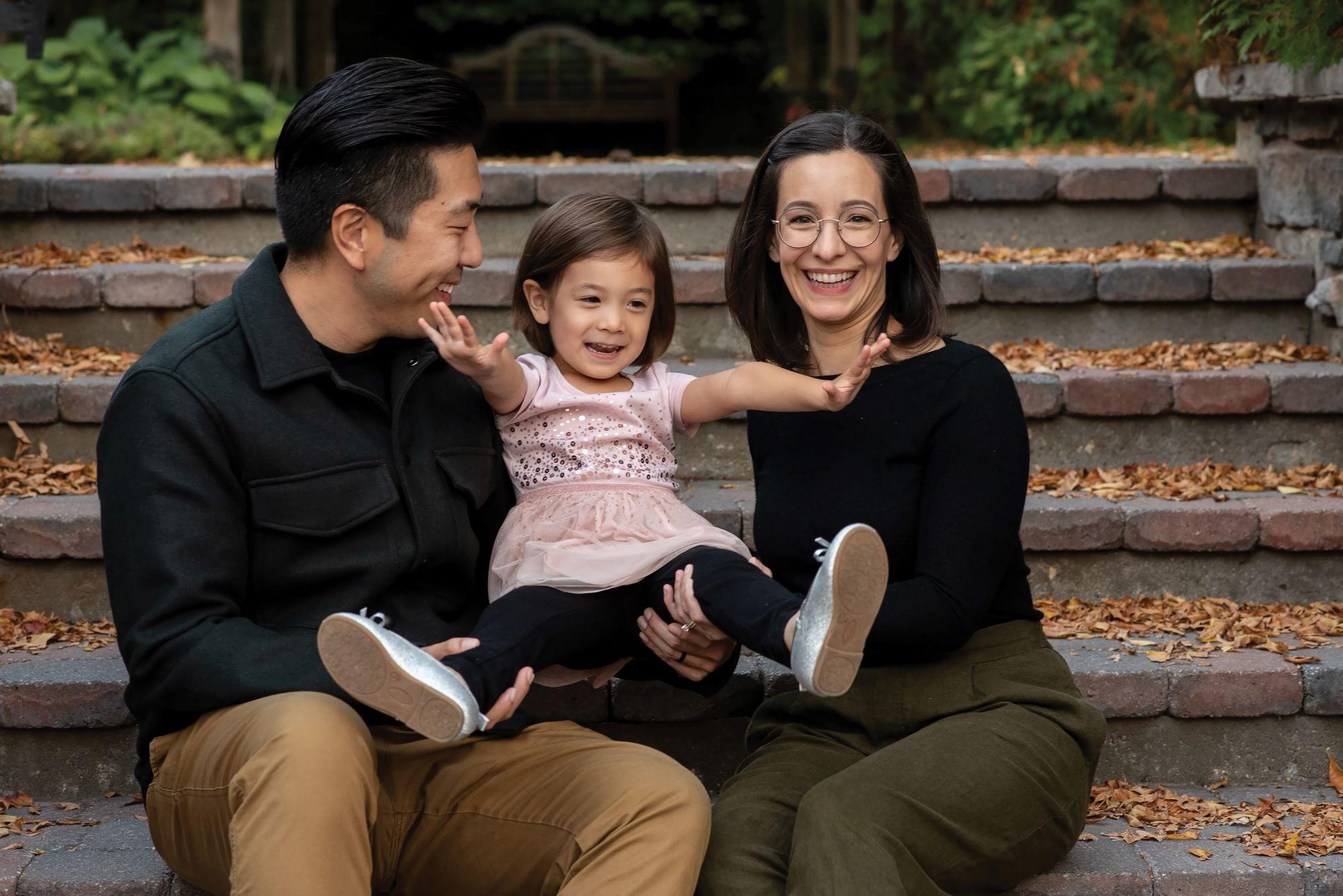
After the birth of their daughter, Mira, in the fall of 2019, Wright dealt with postpartum mental health struggles and, pretty soon, a global pandemic arrived to heighten the challenges she was already facing. The shift from total immersion in academia to total immersion in diapers and bottles was difficult. “The love I felt for my daughter was like nothing I had ever experienced, but it was hard being so isolated and having work go away. I felt this weird mix of being both incredibly busy and incredibly bored,” she says. Returning to work was an important part of regaining her identity: she applied for tenure at the University of Saskatchewan nine months after Mira was born. When she and Tim broached the second-baby topic, they had both come to the same conclusion independently: one and done.
Their reasons for wanting another baby hadn’t suddenly disappeared; they just didn’t offset the other side of the argument. “Children are expensive, but it’s really a question of hours in the day. Maybe I’d have another kid if you could clone me,” Wright says. She’s discovered the pros of single-child parenting: “You hear multi-sibling families describe one-on-one time as a special occasion. For me, that’s every day.” She and Tim can also parent together: sitting side by side at their daughter’s soccer game, rather than dividing and conquering multiple kids’ extracurriculars. And they can take time to themselves, whether that’s working or catching up with friends. It’s not “ ‘having it all,’ ” she says, poking fun at the catchphrase that has haunted working women for decades. “But it does feel closer.”
In 2023, StatsCan released a comprehensive study on the cost of having a child, putting the average at a gobsmacking $350,000 over 17 years. During that period, middle-class parents spend about $85,000 on housing, $59,000 on transportation and $48,000 on food. All of these stats come from data collected in 2017, which means it doesn’t account for a 30 per cent rise in the cost of living over the last seven years or the current real estate market. In another StatsCan study, 38 per cent of Canadians under 30 cited affordability as a reason they didn’t feel they could start a family.
For others, like Ann Gee, the cost of the child they have is pushing them toward one and done. Gee is a social worker from Saskatoon. She and her husband met playing ultimate frisbee when she was 29 and he was 39. She didn’t wait long to put her cards on the table: “I said, ‘Just so you know, I want kids.’ He answered, ‘How about kid, singular?’ ” Now Gee can’t imagine having more than that. She recently posted in a one-and-done parenting group about her latest grocery bill: “If cost of living keeps going up, I may snap,” she said, detailing the many ways she pinches pennies in the parenting department. She supplements grocery store produce with the tomatoes and peppers she grows in her garden. She’s still breastfeeding her daughter at 22 months—in part, a money-saving strategy. Cloth diapers were an environmental move, until they got their energy bill. “We were spending $49 a month to wash them!”
Gee’s husband is a high school teacher whose wages have remained stagnant for years. Before she became a mom, Gee was a self-employed counsellor, but last fall she took a full-time job for the regular paycheque. Both parents worry about how work takes away time with their daughter. Sometimes they’ll keep her up an hour after bedtime. Recently, they started a savings fund for a trip to Jamaica. If all goes according to plan, they’ll be on the beach by 2027, in time for their daughter’s fifth birthday. “I don’t want to sound ungrateful. We have a roof over our head, and so many people don’t have that,” Gee says. But even that’s a source of worry: her mortgage is up for renewal later this year.
Affordable housing is affecting family size at various junctures, starting with the staggering number of young people who can’t afford to move out: 70 per cent of Canadians ages 20 to 24 still live with their parents. For the time ever, StatsCan’s cost-of-parenting survey included an addendum calculating the average expense of a child who stays home until they’re 22: an additional $90,000. There is also a non-existent supply of larger family-sized rental units in urban centres like Vancouver and Toronto.
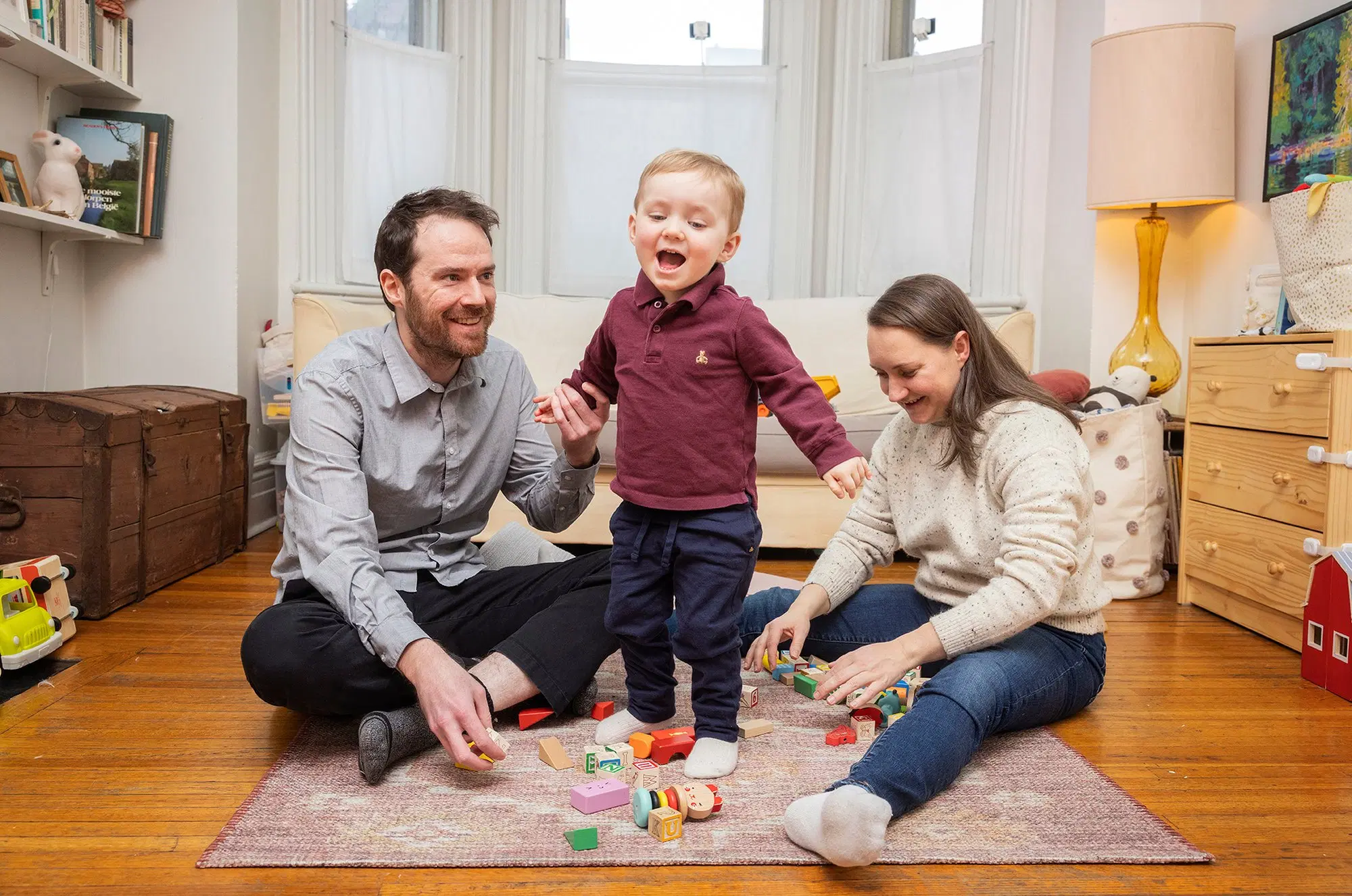
Helene Goderis and her partner, Robin, co-sleep with their two-year-old son, Cary. They love sharing their bed, but it’s also a great way to save space. Helene won the rental lottery 10 years ago when she moved into her 1,500-square-foot one-bedroom with a backyard in a great Toronto neighbourhood for $1,500. Her rent has gone up by about $100 over the last decade; the cost of a newly listed one-bedroom rental in the area sits upward of $2,500, and that’s for a basement unit. Helene wants to have another baby and she worries that, at 43, she’s fighting the clock. But she learned recently that the new owners of her building are planning a demolition, which has pushed her family into a state of housing precarity. “We would move out, but where can we go?” she says. She works as a freelance music instructor and needs to be in the neighbourhood to see her clients. She had to go back to work three weeks after Cary was born to make ends meet. “Those early days were not easy. I’d be teaching, and my son would be putting an electrical cord in his mouth.”
I can relate to the pains of self-employment and parenthood. Neither John nor I qualified for paid parental leave. I was back at work four days after my daughter was born, one foot on that baby bouncer, running on a mix of delusion and adrenaline. We live in a one-bedroom apartment, although we own our house and use the second apartment as an income property. The first practical conversation John and I had about our baby was where this new roommate of ours was going to sleep. We took out a loan to extend the wall of our bedroom and create a second space. The interest on that loan had gone up by $300 a month by the time our daughter started daycare (which added an additional $1,500 to our monthly budget). I was surprised to learn that formula may as well be fine wine from a cost perspective, and thank the lord for hand-me-downs. As older parents, we inherited a ridiculous amount of clothing and toys from friends.
Of course, our good fortune goes a lot deeper than that. We have grandparents on both sides helping with annual RESP contributions. We got our loan because we own our house, and we own our house because John’s parents bought it 20 years ago for approximately one-fifth of its current market value and sold it to us a decade later. Owning our home is the security I cling to when I start spinning out about future unknowns: braces, tutors, where we will live when our daughter outgrows sharing a flimsy set of French doors with her parents. Yes, these are champagne problems, but barring a windfall, our living situation only works with one.
Anir Banerjee is a single dad to a single daughter: Paakhi, who recently celebrated her ninth birthday by hosting her whole Grade 4 class at the Telus Spark Science Centre in Calgary. Paakhi takes swimming lessons on Tuesdays and Brazilian jiu-jitsu twice a week. Recently, dad and daughter travelled to India to visit family—all of these things made possible by being one and done.
Banerjee and his ex-wife moved from India to Denver and, later, to Calgary in 2020, when Paakhi was six. The couple soon discovered they were not on the same page regarding family expansion. She wanted more kids, but he grew up with a brother in a family where finances were tight, and he felt that his parents would have invested more in things like education, activities and housing with just one child. “It might sound crude, but it’s math,” he says. “I have limited time and limited resources and I’d rather raise and support one human properly than not do as good of a job with more than one.”
Every parent I spoke to for this story cited the escalating demands of parenthood as part of their personal one-and-done narrative. It’s resources as in dollars and cents, but also time and energy and the patience it takes to have an emotionally productive conversation with a toddler. Parents today devote twice as many hours to childcare as they did 50 years ago, when most women didn’t work outside the home. (We’ve all seen those memes comparing the lax parenting of the 1980s to the helicopters of today). A lot of people shared lists of three or four extracurriculars as a good reason to be one and done. Others were keen on enrichment through travel. Helene Goderis, the music teacher facing eviction, remembered all the things she felt like she was supposed to buy. “I had one friend telling me that an electric wipe warmer was an absolute necessity, like a regular wipe would be painful to my baby.”
Here’s where the conversation around the cost of parenting gets tricky, says Lyman Stone, a McGill demographer whose recent report, “Where Have All the Babies Gone?”, cites intensive parenting as a key factor driving the fertility decline. “A lot of these subjective costs are getting higher as more people buy into these ideas of what successful parenting looks like,” he says. The same young people who put off having babies to focus on career demands are bringing both their competitive spirit and economic anxiety into the parenting realm. The result is a culture of “never enough.” “Parenting today is being presented as something that only superheroes can do,” Stone says. Many young people don’t feel up to the task.
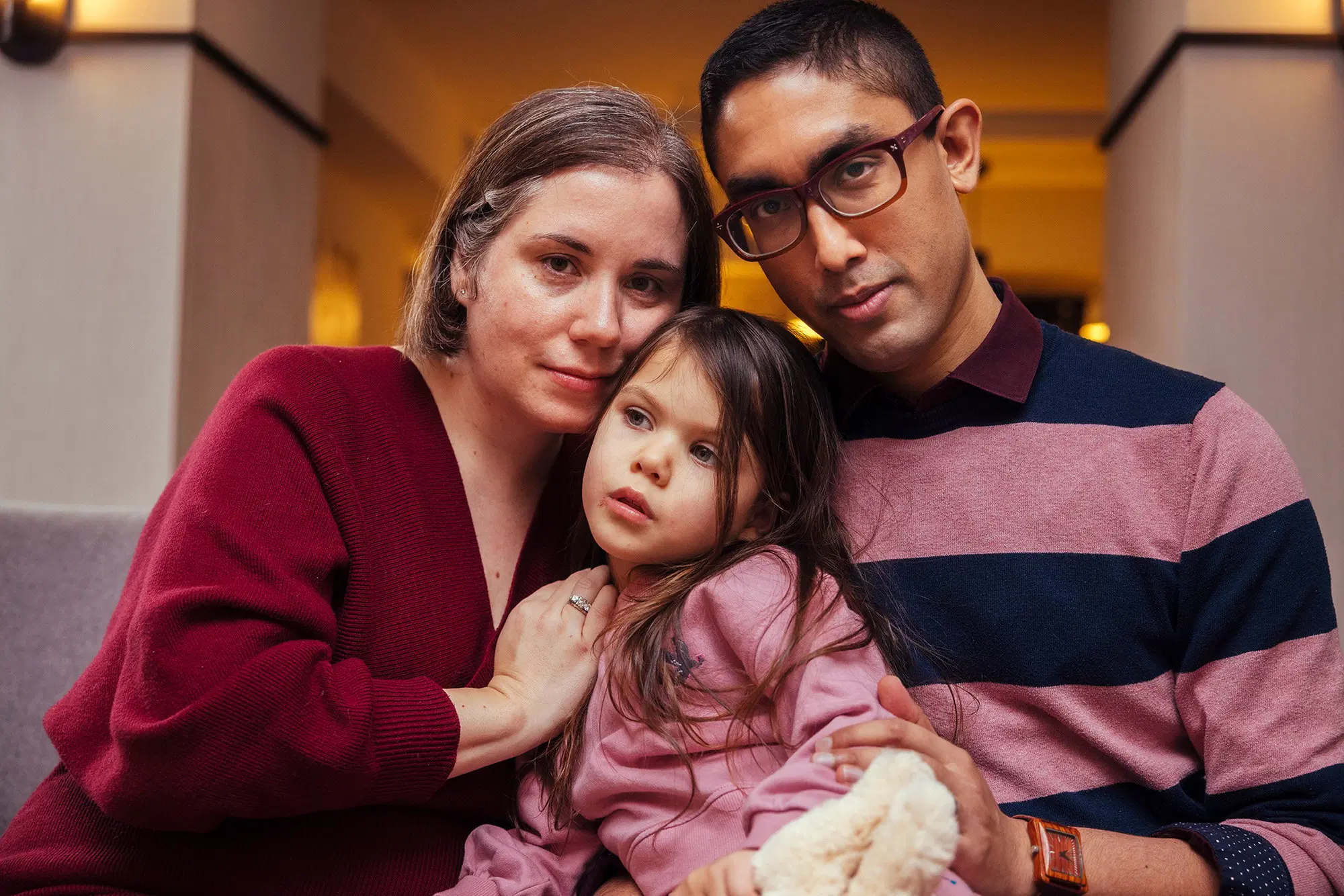
Sarah Sahagian did a master’s in gender studies at the London School of Economics. She has edited an anthology series on mom blame. Still, when she had her baby, Beatrix, in 2020, she found herself susceptible to these very forces, starting with the idea that she absolutely had to read her daughter five books every night: “I read somewhere that this was beneficial and, I swear, if I read her four books I’d be lying awake in bed feeling like I’d ruined her chances of going to law school.” Beatrix will start kindergarten in the fall, and her parents are currently weighing the pros and cons of Montessori versus alternative school. “We’re at the point where we’re considering a school that is nowhere close to our house because maybe it has a better curriculum,” she says.
Initially she imagined a larger family, but a medical emergency during her pregnancy took that option off the table, and in some ways she’s glad. “It’s hard to have the decision taken out of our hands, but I also feel like what happened gave me the excuse to have the family that we want and not feel bad about it,” she says. Being one and done incentivizes her family to get involved in their community. Before we get off the phone, she invites me and my daughter to join her and Beatrix for a playdate.
You don’t need a crystal ball to see the impact of smaller families on the bigger picture. Like many countries in the world, Canada’s social safety net is based on the presumption of deposits far outnumbering withdrawals—which made a lot of sense when our government released the first universal pension plan in 1952, during the baby boom. In 1966 there were 7.7 working-age individuals for every senior. Today it’s 3.4. The ratio will reach 2:1 in the next decade. Federal spending on elder care will soar from the current rate of 2.7 per cent of GDP to 3.2 by 2031. Already there is talk of replacing our universal system with a means-based approach, where wealthier taxpayers would be expected to pay their own freight.
By 2069 the labour force will have shrunk from its 2007 peak (69.5 per cent) to below 60 per cent, decimating both our productivity and our tax base. The federal government will be forced to cut provincial funding for health care and education. Policy-makers may redirect funding for universities toward long-term care, and infrastructure will erode. Innovation in automation and AI could go a long way toward boosting productivity, but many researchers believe the real blow will come via a shrinking consumer economy. Robots don’t buy homes or dishwashers or electric wipe warmers. And, for now, at least, they can’t compete within the realm of human innovation. Young people have always been the driving force behind economic progress, their energy and fresh perspective helping societies to solve the most pressing issues of the day. Like fertility decline, for example.
It’s not all doom and gloom: the current unbalanced population pyramid will eventually balance back out. In 50 years, the boomers will be gone and, eventually, we could adjust to population contraction with benefits that may include climate improvement and more equitable wealth distribution. But before that happens, fertility will be a hot-button political issue: a mainstay of election platforms and political punditry, a topic guaranteed to break up a Thanksgiving dinner. We will debate whether there is a crisis, and then we will debate what a solution looks like. On the left, we will hear calls for greater government intervention; on the right, it will be rhetoric around a return to family values.
Canada’s most effective population strategy has always been immigration: the population spike in the 1950s and ’60s had as much to do with meeting postwar immigration targets as it did with the native baby boom. The economic slowdown of the 1990s was addressed via a new agenda targeting skilled immigrants. When the national population blew past 40 million this past June—an event covered with a lot of economic optimism and a live countdown clock—that milestone had absolutely nothing to do with babies. Canada’s commitment to diversity and multiculturalism is evidence of our democratic ideals, but it’s also solid economic strategy. Countries that give in to nationalist impulses (France, Italy, even the U.S., depending on who wins the next election) are likely to suffer more in the era of demographic decline.
Even still, immigration is far from a complete solution. As the global population continues to decline, more developed nations will compete for the same skilled immigrants. At the same time, those people will have more economic opportunity in their own developing nations. All of which goes back to demographer Darrell Bricker’s point about how more progress creates more choice. Currently the majority of Canadian immigrants come from China, India and the Philippines, all countries that will struggle with their own fertility issues in the next century. So then what?
I cringed when Bricker said that our government may eventually implore young adults to have kids in the same way they once implored young men to go to war. It turns out we’d be late to the party. In 2012, Singapore introduced a state-sponsored date night, including a promo rap video (“It’s time to do our civic duty . . . I’m talking about making a baby”). Spain appointed a sex tsar. The position (a lot less sexy than it sounds) is held by a demographer who largely focuses on the root causes of social inequity. A “Do it for Denmark” tourism campaign encouraged couples to get away for a quick baby-making holiday. And in Hungary, women who have children before the age of 30, and families who have four or more children, are exempt from paying income tax for the rest of their lives. This from the same administration imposing limits on abortion and blaming highly educated women for low fertility because they have trouble attracting men.
There are a lot of ethical reasons to oppose public policy engineered to influence individual fertility decisions. There’s also the question of whether these policies even work. “We want to believe that if we only provided more office daycares, more baby bonuses, that that would make a difference,” says Bricker. “But then look at the Nordic countries, where parents and citizens enjoy every imaginable social benefit, and declining fertility remains an issue in those places.”
The women of South Korea have recently embarked on a strike action against “being baby-making machines.” For the last three years, the country has reported the lowest fertility rate on record despite interventions aimed at turning it around. Asked recently about why this was proving impossible, former gender equality minister Chung Hyun-back blamed “our patriarchal culture.” Of course this means something totally different in South Korea than it does in Canada. And yet many of the social demographers I spoke with saw increased gender equality as the last best hope for improved fertility prospects.
“This is what we call the second stage of the gender revolution—men contributing equally in the domestic sphere,” says Laura Wright, the sociologist and one-and-done mom who almost bought the double stroller. She believes that one silver lining of the pandemic could be the degenderization of the need for flexible work. Quebec had some success raising fertility rates in the 1990s, based partly on policy that normalized paternity leaves. Canada’s adoption of government-subsidized childcare will potentially help more parents to balance work and family, regardless of how many kids they choose to have. Many of the parents I spoke with were reaping the rewards of $10-a-day childcare. Others, like me, are still on a waitlist.
As well as alleviating financial pressure, public policy could play a role in dialling down the pressure cooker around parenting. “In Canada, the government interacts with new parents a whole bunch between the first doctor’s visit and the first grade,” says demographer Lyman Stone. “What if we didn’t send new parents home from the hospital with a 50-chapter manual? What if the message wasn’t, ‘You are destined to fail,’ but instead, ‘You got this’?”
His comments take me back to those first few hours as a parent, after the epidural had worn off and the supposedly intuitive act of breastfeeding was proving about as “natural” as knife juggling. John and I still do imitations of the lactation expert who visited our room and yelled about all of the things we were doing wrong, just eight hours into parenthood. Early visits to the pediatrician made me feel like the kid who hadn’t finished her homework. How many times per night is she feeding and pooping? Why aren’t you waking her up more? Why haven’t you completed the feeding and pooping chart? I was able to laugh it off, but I thought about what it would feel like to go through this experience if I was a lot younger, or doing it on my own, or anything other than a privileged white woman in a biased health-care system.
The good-enough parenting movement has emerged to counteract the unrealistic expectations that parents today face. The philosophy is based on the idea that most parents would benefit by giving themselves a break, and also that resilience and the ability to manage life’s lesser-than moments may be just as important as their kid learning Mandarin or mastering a musical instrument.
“Good enough” became a mantra for me long before I was a mom. I even bought a postcard a few years back that read, “Don’t let the perfect be the enemy of the good,” and put it up in my kitchen as a reminder for those times when the task at hand feels unsurmountable. When Darby was 18 months old, she ripped it off the wall and smeared it with one of those blended fruit pouches that would not pass muster with the parenting police. So it’s gone. But the sentiment remains, as it relates to life and parenting—and to one-and-done parenting in particular.
Just the other day my daughter told me that she wants to be “an adult” when she grows up, which struck me as a daunting goal as I contemplate the challenges her generation will face. I hope she will be able to build the life she aspires to, including whatever work and family makes sense to her. I hope her cousins can be the family that she will need when her parents are gone. Two summers ago my sisters and I scattered our dad’s ashes together, and to think of my daughter going through that kind of loss on her own brings on the waterworks even as I write this. I cry all the time now—at The Lion King, when my daughter moved into her big-girl bed, when she pointed to Wonder Woman on the TV screen and said, “That’s Mommy.” (I know, I know—too much screen time). I’m lucky the emotionally rich experiences of parenthood aren’t contingent on a particular number of kids, because building the life that I want kind of is. And so we are one and done. Not because it’s perfect, but because it’s pretty great.
